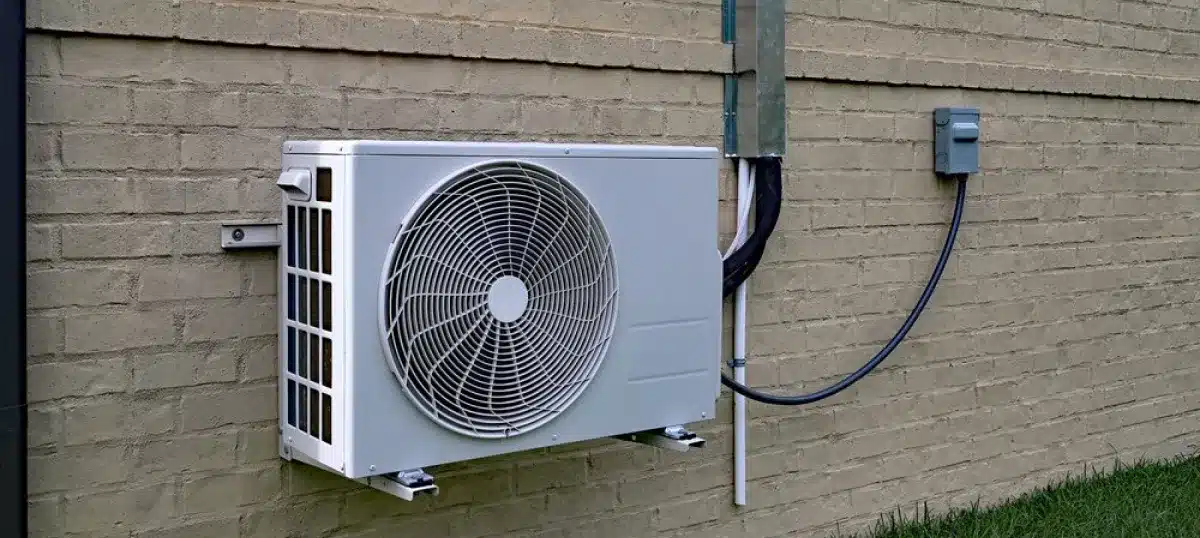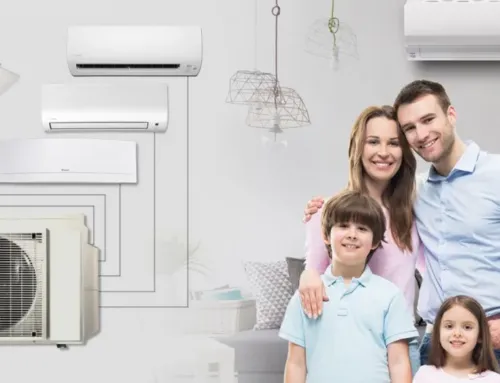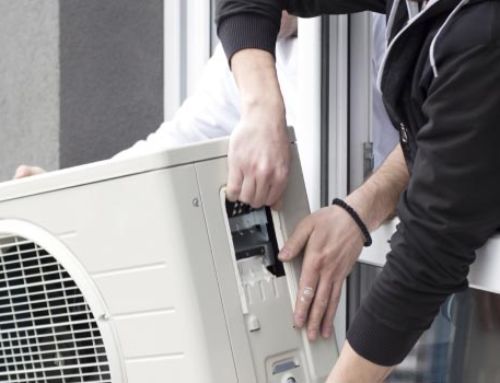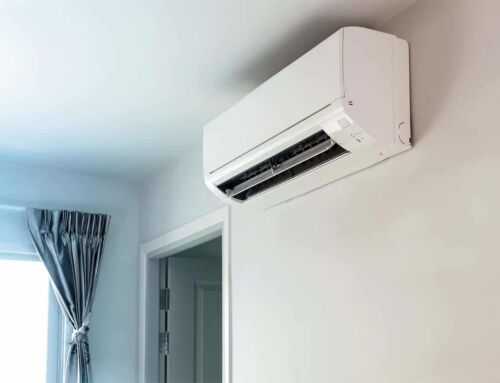A/C is synonymous with cool summer temperatures.
But when the mercury drops and Sydney’s chilly winter months hit, your air conditioning system becomes a crucial tool to help keep you and your family warm.
With rising energy costs and rising living costs, you might be coming into this winter asking…
“Will a split system air conditioner be expensive to run for heating?”
Whether you’ve already got a split system A/C or you’re thinking of making the switch, this is an important question to answer.
In this article, we’ll help answer that question (plus plenty more), by covering:
- A brief overview of split system heating
- How to choose the right split system for your needs
- Key factors influencing split system heating expenses
By unpacking the factors that influence running costs – including energy efficiency, installation, and maintenance – you’ll be able to work around your lifestyle and plan your budget with confidence.
So let’s get right into it.
Split System Heating: An Overview
Split system air conditioners, renowned for their versatility in both cooling and heating, have become a staple in Sydney homes.
These include:
- Single Split Systems: Ideal for heating individual rooms or small spaces, single split systems consist of one outdoor unit connected to one indoor unit. They are the most common and cost-effective option for residential use.
- Multi-Split Systems: For those looking to heat multiple rooms or a larger space without installing multiple outdoor units, multi-split systems allow the connection of up to five indoor units to a single outdoor unit, providing flexibility and efficiency.
Advantages of Split Systems
- Energy Efficiency: Modern split systems are designed with energy efficiency in mind, often featuring inverter technology that adjusts power use to the required heating demand. This not only reduces energy consumption but also minimises running costs.
- Individual Control: Split systems offer the convenience of controlling temperatures in individual rooms, allowing for personalised comfort and further energy savings by only heating spaces in use.
- Quiet Operation: Engineered for quiet performance, split systems ensure a peaceful indoor environment, making them ideal for bedrooms, living rooms, and offices.
- Aesthetic Integration: With sleek designs and various sizes, split systems can be seamlessly integrated into any home décor, ensuring functionality doesn’t compromise style.
Challenges of Split Systems
- Initial Investment: The upfront cost of purchasing and installing a split system can be higher than other heating methods. However, the long-term energy savings often offset these initial expenses.
- Installation Considerations: Proper installation is crucial for optimal performance and efficiency. Factors such as the size of the room, the location of the unit, and the building’s insulation play significant roles in the system’s effectiveness and running costs.
- Maintenance: Regular maintenance is essential to keep a split system running efficiently. Neglecting maintenance can lead to decreased performance and higher running costs over time.
How to Choose The Right Split System for Your Sydney Home
Climate Conditions
Sydney experiences a temperate climate, with mild winters and the occasional cold snap.
The average winter temperature ranges from 8°C to 17°C, a relatively moderate climate that requires heating solutions capable of providing consistent warmth without excessive power.
Split systems, with their adjustable settings and inverter technology, are perfectly suited to these conditions, offering the flexibility to maintain optimal indoor temperatures efficiently.
Reverse Cycle vs. Split System: What’s Right For You?
System Size
A unit too small won’t adequately heat the space, leading to overworking the system and increased energy consumption.
A too-large unit will cycle on and off too frequently, reducing efficiency and lifespan. The size of the split system should be determined based on:
- Room Size: Square footage is a starting point. As a general rule, a room measuring 20 square metres requires a 2.5 kW system.
- Insulation: Well-insulated homes retain heat better, requiring less power to maintain the desired temperature.
- Windows: Large or poorly insulated windows can lose a lot of heat, necessitating a more powerful system.
- Ceiling Height: High ceilings require more power to heat a room due to the larger volume of air.
Expert Recommendations
- Energy Efficiency: Look for systems with a high energy star rating. These units are more efficient, leading to lower running costs. Models with inverter technology are particularly recommended for their ability to adjust output to precisely match the heating demand.
- Professional Installation: Ensure that your system is installed by a licensed professional. Proper installation is crucial for optimal performance and efficiency.
- Regular Maintenance: Schedule regular maintenance checks to keep your system running at peak efficiency. This includes cleaning filters and checking for any potential issues that could affect performance.
Key Factors Influencing Split System Heating Expenses
Local Energy Prices
Energy prices can fluctuate based on a variety of factors, including market demand, supply constraints, and government policies.
High energy prices can noticeably increase the cost of heating, making the energy efficiency of your split system a critical aspect to consider.
An energy-efficient model may have a higher upfront cost but can lead to significant savings on your energy bill over time.
It’s important to stay informed about potential changes in energy pricing and consider fixed-rate energy plans that can provide price stability.
Choosing a split system with a high energy star rating becomes even more crucial in areas with higher electricity rates, as the increased efficiency can help mitigate the impact of rising energy costs.
System Efficiency and Technology
Systems equipped with inverter technology are more energy-efficient because they can adjust their output to match the required heating load, reducing unnecessary energy consumption.
Technological advancements in split systems, such as programmable timers and smart home compatibility, allow for more precise control over heating and can contribute to lower running costs.
By setting the system to operate only when needed or adjusting the temperature based on occupancy, homeowners can significantly reduce energy consumption and, consequently, their heating expenses.
Understanding and utilising these features can maximise efficiency and ensure that your split system provides warmth without wastefully overheating your space.
Installation and Maintenance
Proper installation plays a pivotal role in the efficiency and longevity of a split system. Incorrect installation can lead to inefficient operation and increased energy consumption, which in turn can inflate running costs.
It’s essential to hire a qualified and experienced technician to ensure that the system is installed correctly and is the right size for the space. An oversized or undersized system can lead to inefficiency and higher running costs.
Regular maintenance is equally important to ensure that the system operates efficiently throughout its lifespan. A poorly maintained system can suffer from decreased efficiency, leading to higher energy consumption and costs.
Regular checks and cleaning of filters can prevent airflow blockage, and ensuring the outdoor unit is free from debris can improve overall efficiency.
Investing in regular maintenance not only prolongs the life of the system but also ensures it runs as economically as possible.
Are Split Systems Expensive to Run for Heating?
Modern split systems are designed with efficiency in mind and can be a cost-effective solution compared to traditional heating methods.
The overall cost-effectiveness depends on the system’s energy efficiency, the size and insulation of your home, and your specific usage patterns.
- Energy Efficiency: Many new models come with high energy star ratings and inverter technology, which can significantly reduce electricity usage by adjusting the output based on the need, thereby lowering running costs.
- Installation and Maintenance: Correct installation and regular maintenance ensure that the system operates efficiently, further helping to reduce long-term costs.
- Climate and Usage: Sydney’s mild winters mean the heating demand is generally lower compared to colder climates, which can result in lower operational costs.
The ongoing running costs can be quite manageable and cost-effective, especially if you choose a high-efficiency model and maintain it properly.
For precise calculations tailored to your home and lifestyle, consulting with a professional like HunterCON Electrical and Air can provide you with detailed insights and help you make an informed decision.
Trust HunterCON to Help You Save Time and Money This Winter
HunterCON Electrical and Air stands at the forefront of this industry, bringing a rich legacy of excellence and a deep commitment to quality and customer satisfaction.
Why choose HunterCON Electrical and Air?
- Expert Guidance: Our team of licensed professionals is equipped to provide personalised advice, ensuring you find the perfect heating solution tailored to your specific needs.
- Precision Installation: With years of experience, we guarantee installations that not only comply with all regulations but are also optimised for performance and efficiency.
- Peace of Mind: Avoid the costly errors that come from inexperienced handling. Our commitment to excellence ensures that your investment is safe, effective, and enduring.
Whether you’re seeking to install a new system, upgrade an existing one, or simply explore your heating options, HunterCON Electrical and Air is here to guide you every step of the way.
Contact us today for personalised advice or a fast and FREE quote






Leave A Comment